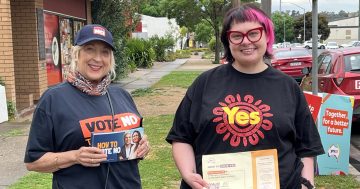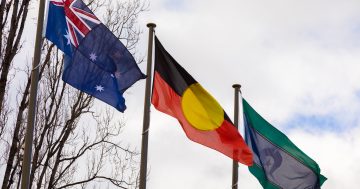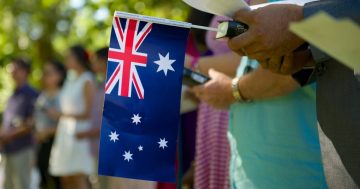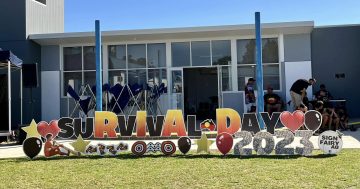
National NAIDOC Committee chair John Paul Janke. Photo: NAIDOC.
The 2022 NAIDOC Week theme is a call to action – Get up, Stand up! Show up!
National NAIDOC Committee co-chair John Paul Janke says it’s both a rallying cry and a celebration of those who took a stand in the past.
“It goes back to our very first frontier warriors and leaders through to those who fought for basic human rights from the 1920s and 30s, up until the 1967 referendum and through the 70s, 80s and 90s,” he explains.
“It’s also a call to both the Indigenous and non-Indigenous community to put some meat on the bone and say ‘let’s get some real action’.”
NAIDOC week kicks off on Sunday, running from 3 to 10 July with activities and events across the country.
While the week remains rooted in its origins in the Aboriginal civil rights movement of the 1930s, the event has evolved to become a celebration and sharing of culture.
“For Aboriginal people, it will always be seen as a moment of protest,” John Paul explains.
“From the 70s and 80s it became a showcase of our cultural and physical survival but for a lot of Aboriginal people now it’s an invitation to the wider community to join us in celebrating Aboriginal people, history and culture, and having conversations about the aspirations of First Nations communities.”
An unprecedented number of Indigenous people were elected to parliament in 2022 and John Paul says it’s a historic time for Australia.
“At the 1972 election, there were only two Aboriginal men who ran in the election campaign. One was Neville Bonner seeking re-election as the Queensland senator and the other was Gordon Brisco who ran in Central Australia for the Australia party,” he says.
“Fifty years down the track, you have so many people running in with different parties and now we have 11 elected members.”
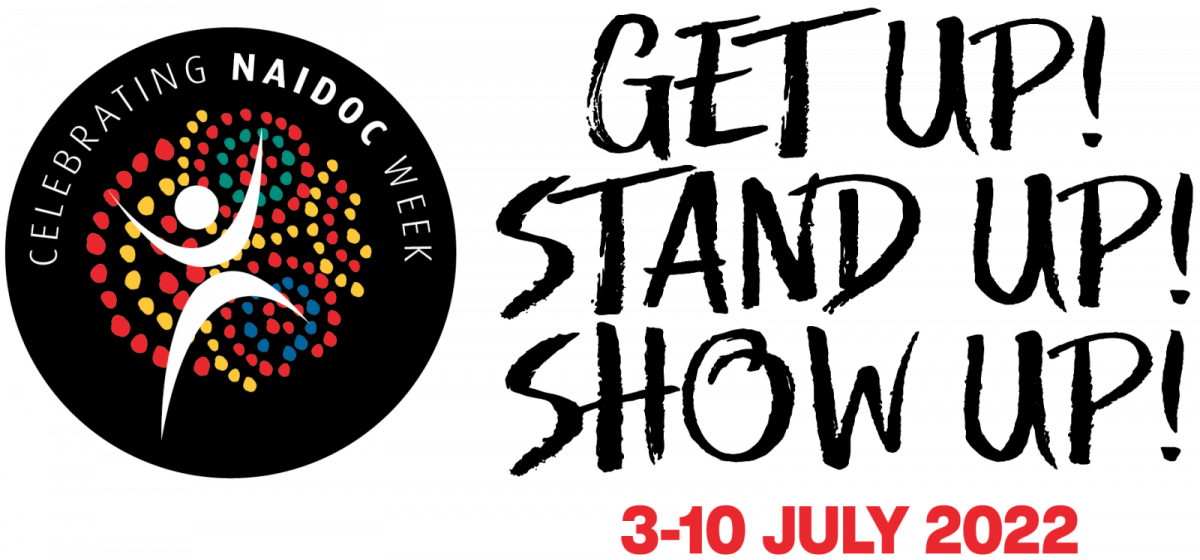
2022 National NAIDOC logo. Photo: Supplied.
The acronym stands for National Aborigines and Islanders Day Observance Committee (NAIDOC) and has its origins in the early 20th century.
Aboriginal rights groups have long boycotted commemorations of British settlement on 26 January, but their efforts were largely ignored by the broader Australian population.
Protests over the poor treatment of First Nations peoples gained prominence in the 1930s as organisations like the Australian Aborigines Progressive Association (AAPA) and the Australian Aborigines League (AAL) became more organised.
Yorta Yorta man William Cooper petitioned King George V in 1935 asking for identified Aboriginal electorates in Federal Parliament. On 26 January, 1938 Wiradjuri man Bill Ferguson and Jack Patton gathered leaders in Sydney to declare a “Day of Mourning”.
Over 1000 people marched through the CBD calling for “citizen’s rights” in one of the world’s first major civil rights gatherings.
From here, the Day of Mourning evolved into “Aboriginal Sunday” which was observed in churches on the weekend before Australia Day, and later “Aborigines Day” was shifted to July.
In 1956, the first NADOC Committee was formed and in 1991 became NAIDOC to include those of Torres Strait Islander background.
Since 1984, the committee has been calling for National Aborigines Day to be declared a national public holiday.

Gudanji/Wakaja artist Ryhia Dank designed the 2022 National NAIDOC poster. Photo: Supplied.
John Paul says NAIDOC offers a chance for Australia to stop and listen to Indigenous people.
“It’s the flagship moment where the aspirations of Aboriginal and Torres Strait Islander people are put to the forefront,” he says.
“I would say show up at local events, learn more and don’t be afraid of having those conversations.”
While he says it can be an important starting point for much needed dialogue, it’s not a conversation that should be confined to one week.
“Use NAIDOC week to start those conversations, start those relationships and then continue them all year round, not just for seven days,” he says.
You can learn more about NAIDOC on the committee’s website and get the latest about what’s on in Wagga on the Wagga Wagga NAIDOC Committee Facebook page.







